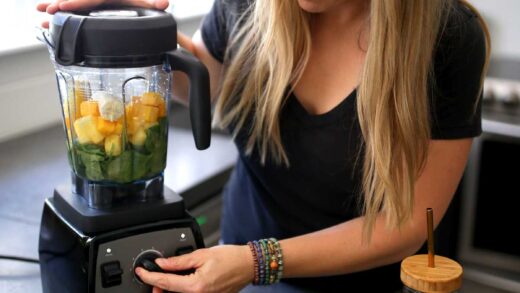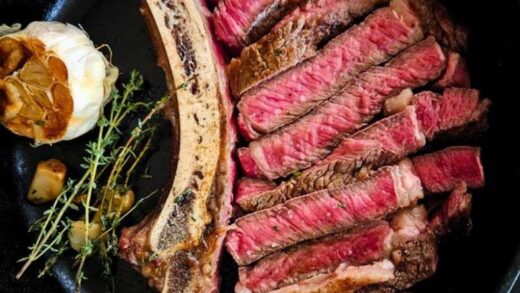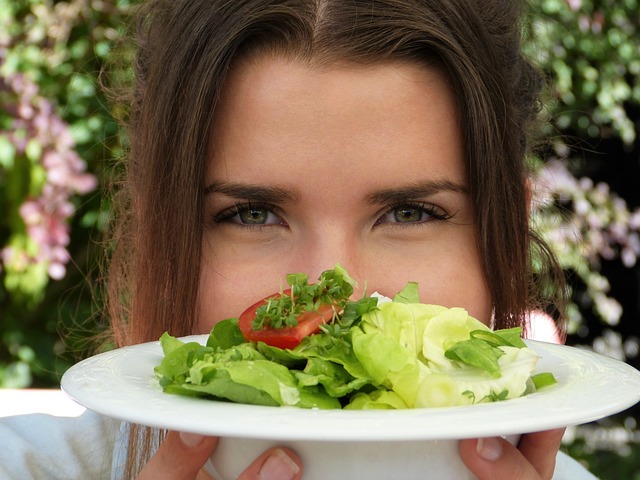When you get your KCBS BBQ results, they can look confusing. This week’s BBQ Tips Podcast breaks down what all the numbers mean.
That way you can fully understand your KCBS BBQ scores, which will help you up your competition BBQ game.
Listen to the BBQ Tips Podcast on
I spent a week in Memphis, Tennessee, at SmokeSlam, and then I had a barbecue competition last weekend here in Boulder City, Nevada. SmokeSlam was a huge success. We had so much fun.
I was there cooking with Cowboy Charcoal and B&B Charcoal. We served up thousands of portions of all sorts of barbecue that we cooked over live fire and over charcoal.
Unfortunately, I didn’t get to see much of the competition side, and I never made it out to Memphis in May because I was swamped at the demo tent. But it was so fun and they’ve already set the dates for both Memphis in May and SmokeSlam for 2025, again the same weekend in Memphis, Tennessee. So we’ll see. I’ll probably head to one of them. We’ll just see how things go.
As far as my competition this past weekend, I finally got out of my rut. I don’t know what’s been going on lately. Getting calls has been a challenge for me for 2024. I haven’t really changed anything, so I don’t know what the issue has been, but I finally got some calls at the Best Damn Barbecue Fest.
I got ninth in brisket and I got 10th overall, and I didn’t get any other calls and still made 10th overall. That’s because one of the things when it comes to getting that overall score, that overall top ten call is you need to be consistent in all categories.
What I find is you have to get a score of about 170 or higher in each category to even be considered for making that top ten call, because what happens is there will be teams that score really well 180, 170, 175 in a couple categories, but then maybe they’re in the 160s in one category or maybe more.
But if you as a cook can hit that 170 plus in all four categories, then you have a greater chance of getting that top ten call. And that’s what I did. I had over 170 in chicken ribs, pork and brisket.
So why am I talking to you about so much score stuff? Well, because that’s what today’s podcast is all about.
We are going to nerd out for a bit, and I’m going to dive deep into the judges’ numbers and the judges’ score sheets and some information that you may not even know that you have access to that can help you evaluate how you cooked to make you a better cook for next time. That way you can focus on exactly what you need to work on to get your scores up. So let’s go.
Team Details Sheets
After the award ceremonies for every KCBS barbecue competition, you should be provided with a score sheet.
Now, they used to print out multiple pages. You used to get your judges’ table scores, plus the overall scores plus each category score. At least on the West Coast. I don’t know about everywhere else, but on the West Coast, they now only give you your table scores.
That way they can save trees, save printing, hopefully speed up the time to where it gets to the award ceremonies.
With this one sheet of paper, you can get a lot of information, but there’s even more information out there. I’m going to tell you how to get that in a little bit, but let’s start with the sheet that you do get.

Save this BBQ Tip
Enter your email, and I’ll send this link directly to your inbox. Plus, you’ll get new BBQ recipes and tips weekly.
This sheet is titled Team Details. At the top it’s going to have your team name, your KCBS number, things like that.
But then the very first column which is on the left is going to tell you what place you came in overall. So for instance, in chicken I got 15th. So there were 33 teams and I placed 15th in chicken. Below that I got 17th in ribs, 11th in pork and ninth in brisket.
The next column is going to show the category and that’s just the meat category. Just like I talked about chicken ribs, pork and brisket.
Judges’ Scores
Then once you move over a column, this is where you’re going to see your judges’ scores.
Every table has six judges. I’ve talked about this extensively in my previous podcasts, so go back and listen to those if you have questions about how the scoring all works when it comes to how they decide how to, rate you based on the criteria of appearance, taste and tenderness and exactly what they’re looking for.
But if you look at the first column under the judges’ section, you’re going to see judge one, followed by judge two, three, four, five, six.
Under each judge, there’s going to be three scores, the highest score they can give you is a nine. The lowest score they can give you is a five. Unless you have a penalty or DQ. Then they can give you a one or a two.
But traditionally you’re going to be between that five and nine range so long as you don’t get any type of penalty. So you’ll see three numbers there.
For instance, my first chicken score is 999. That’s the highest score. That’s a perfect score in my first judge for chicken. So I got a nine in appearance a nine and taste and a nine and tenderness.
Then you’ll move on and you’ll see the next judge. Judge two so that’s going to be 989 and continues down the row. And you get your six different scores. Then below judge one, like I said judge one gave me a 999, you’re going to see the calculated score. The calculated score has a highest value of 36.
Weighted Scoring
The way that they get that is that KCBS has weighted scoring.
- The appearance score is multiplied times 0.56.
- The taste score is multiplied by 2.2972.
- The tenderness score is multiplied by 1.1428.
Lots of math in there. I know it gets confusing, but ultimately what that means is that the taste score is the highest value.
So you want if you want to get a higher score, your taste has to be on point because that’s going to get multiplied by the highest value.
If you take the nine in appearance and you multiply it times 0.56, the nine in taste, multiply it by 2.2972 and then the nine in tenderness, and multiply it by 1.1428, that value, the highest value you can get, is 36.
Dropped Score
There are six judges on the table, but for the most part, only the top five highest scores will count. So they’ll take those top five scores. They’ll add those together and that’s where you get your score.
So if you had a 999 from five judges, that’s 36 points each. Times five judges is 180. So that’s what they call a perfect 180.
That means those top five judges gave you a perfect score. Now the six judge, even though it gets dropped, which is the lowest score, it does count in some instances.
If there was a tie, if there were two teams or even more teams that had the exact same score from the top five judges, then they would go down to that six judge and they would see what that score is.
And the team that had the higher of the sixth score from the judge, they would then break the tie.
As I mentioned, you heard the term perfect 180. That’s when the five judges give you a perfect score. There’s also a perfect perfect. And that’s when all six judges give you a perfect score.
That’s really almost unheard of. It happens, but it’s really, really rare. And if you get a perfect perfect, then you get a special pin from KCBS. If you get a perfect 180, you get a pin too. But the perfect perfect is even a more special pin.
Average Score
Okay, so I talked about that column. Judge one you get your score 999. You get that calculated total using the formula. So for that it would be a 36.
Below that is another row in that column called judge average score. What this is going to show you is how that judge scored as an average against everybody else on that table that you were competing against.
Remember when you have your table, let’s just go with chicken. There are only six, maybe seven entries on that table that those judges are judging. So they’re not supposed to judge you against the one they tasted before or after you. Each one is supposed to be judged independently.
But still the scores are going to vary dramatically. And you may want to know how did that judge score you compared to the other teams on the table.
If you look at that judge, average score for judge one for me for chicken I scored a 36, but the judges average score was 33 and some change.
So I actually scored above average for my table which is great. That’s where I want to be.
Now, this is where it makes a difference. If I go to judge three, judge three didn’t like my chicken. Judge three gave me a 977. So perfect appearance seven on taste, seven on tenderness. There was something that judge didn’t like.
Sometimes with chicken it can be your meat when it comes to tenderness, maybe it just didn’t have enough juiciness to them.
Sometimes it can be your skin. Maybe your skin just didn’t have the quite bite throughness that it needed to have. I feel like mine did. But again, for some reason this judge just didn’t like what I was turning in.
So my total calculated score as a 977 was 29.1200. Ugh. That sucks, I didn’t like it.
Fortunately, that was the low score for the six judges. So that one got tossed out. So it didn’t really matter. But still this is where I go when I look at the judges average.
Does this judge have a consistency of scoring low compared to the other judges on average, or did they just really hate something about my flavor profile and my tenderness?
So if I look at it, my calculated score was 29.1200, the judge’s average score was 31, and some change. So I can see that I did score below average. So this judge did like some chicken from the other team’s a little bit better.
But if I look at that 31 and I compare it to the other judges on the table, I can see that they are an average low scorer.
So judge one has an average score of 33. Judge two had an average score of 33. Judges three and four were both in that 31 range, and then judges five and six had an average score of 32 to 33.
So this judge scored me low, but they judge low consistently, so I don’t feel quite as bad that they hit me hard, because it looks like they probably hit everybody a little bit hard.
Your Table
Let’s move on past the judges columns to this next column. This is the column that is going to feed into some of this information that you really want to dive deep into once I show you how to get some of those other results.
This is your table number. So for me I landed on table 646. We don’t have any idea what table 646 is.
Just like they have blind judging when they get our boxes so they don’t know what my box number is, we don’t know what judge table number 646 is. We don’t know who sat at that table.
They, you know, shift the numbers around. So it’s all blind, which is good.
But what I can find out is what other teams were on my table. And that’s where things get interesting.
Table Rank
But before we do that, we’re going to move to the last column, which is rank. The rank column actually tells you what place you placed on your table.
So for me, for chicken, I ranked third on my table. That means there were two other teams who landed on my table 646, who turned in better chicken than me, or at least better in the sense that the judges scored it higher. They liked it better.
So from there, I can kind of evaluate and say, okay, who is on my table?
What kind of chicken did they turn in? What’s their flavor profiles? Where did they score higher was in appearance, taste or tenderness? Those are the things that you can really dive deep into. If you want to get a little bit crazy about the numbers, which I kind of tend to do.
Details Sheet Summary
So again, I’m going to just give you a quick summary of what this sheet shows your team name, the place you got overall, the category, each judge’s score, your calculated score, their average score for the whole table, the table you landed on and the rank that you placed on that table.
So that’s the sheet that we got at the competition. Sometimes you’ll also get comment cards if there are any. And occasionally you’ll get one more sheet printed out. And that’s the overall scores.
And what that’s going to show you is all of the teams how they ranked in order overall. And then it’ll show each category and the total score that they got in each category, plus their total overall score.
I like when they give me that sheet, because right away I know how I placed overall if I didn’t get a call, this other sheet doesn’t tell me how I placed overall, it just tells me how I placed in each category. So I do find that overall sheet valuable. Most of the time, they do provide that at competitions.
They just print it on the back side. At Best Dam, they had some, delays in the award ceremony, so I think they just gave us the score and drove us to the website to get the rest of the information.
KCBS Score Auditing
Before I move on to those other score sheets, let me address one thing. At this competition, there was quite a delay, and I just want to clear the air for anybody who had some confusion, awards were supposed to be at 3 p.m. or 3:30 p.m.
They ended up being closer to 5 p.m. and teams started to wonder. You know, there’s been a lot of talk in KCBS about scores and are they accurate?
Well, I can tell you, the McIntoshes out here on the West Coast, they run a tight ship. I’ve judged under them and I’ve cooked under them, and they make sure there are no errors when it comes to scores. And I appreciate that so much.
I talked to Kelly afterwards to figure out what the delay was. Two things caused a delay.
One, the organizers planned the awards earlier than the reps really could have been ready for, because there’s just not enough time to calculate everything by 3:30 p.m. when the last turn in is at 1:30 p.m.
Then, the other thing is that he said is in addition to doing a 100% audit of every score sheet and every digital entry, they also do a 100% audit of every comment card that’s received.
So they take that comment card, they match it with a score sheet, they match it with a digital entry. And there were more comment cards than usual during this competition. So that delayed things quite a bit.
So no errors in scoring, per Kelly McIntosh. And I believe him 100%. It all came down to the auditing, and me as a cook,
I would much rather it be a 100% clean audit with accurate results than announcing the results incorrectly and having to fix them later.
Online Score Sheets
Okay. You know, your personal team results. Now, you should be able to figure out how to read that. But I want to show you where there are two more data sheets that you can get.
Go to the KCBS website and click on events. You should be able to see recent events and event results. From there, you’ll find the competition that you cooked in.
Once the results are official, there will be a link that says official results in. You just click on that and then it will open up all of the results for the competition that you cooked at. And it doesn’t even just have to be the one you cooked. You can see the results for any competition.
Also on that page you’re going to see the individual category scores. So if you click on that and maximize that box you’ll see the ranking for each team, the team names. And then the score that they got overall in that category. And it’ll be all ranked by how the placement is.
So that way you can see the score that everybody got in chicken ribs pork and brisket. And you can kind of figure out how you fared, whether you were 0.1 points away from getting that top ten call, or if you were pretty far off and you have some work to do. So that’s all interesting and that’s all good.
And I think that that’s valuable.
Summary Score Sheets
But the data that I love the most, that you have to make a little bit of effort to get are the summary score sheets. So just below the overall and all of those categories is a button that you can click that will open up a PDF. And this PDF is a gold in my opinion, because this tells you how every team actually did.
And it shows you who else landed on your table. So who you were kind of competing with as the judges tasted your food compared to another team’s food.

So let’s just look at chicken for an example. I told you that I was on table 646. So I can take this sheet and I can go down and look for 646. B’MacKin BBQ was on my table.
If you guys don’t know B’MacKin BBQ, they are one of the hottest teams on the West Coast. They got reserve grand champion at the Jack Daniel’s last year. So competing against them on my table was no joke. Legit like they are good.
Being on their table doesn’t mean that my chicken should be judged against theirs, because we’re all supposed to get judged independently, but we’re also human.
So if a judge tastes their chicken and it is bomb, and then they taste my chicken and it’s just not quite there, in the judges’ mind, perhaps they may score me an eight and them a nine. You know, things like that could happen. So being on their table is challenging.
But personally, I love it. I want to beat the best, and to be the best, you got to be on the table with the best. So I never balk at being on table with good cooks.
If that makes you nervous and you’re turning in your chicken and you see a really good cook there, maybe you just want to wait a couple seconds, couple minutes and try to land on a different table.
That’s up to you. It’s whatever strategy you want to play.
So again, looking at this chicken summary score sheet, I can go down and I can see all the different teams that were on my table. And I can see how each of the judges scored them. Now it’s not going to give me the breakdown of the score like 998, 987, etc. What it is going to give me though is the total.
So I can see that B’MacKin BBQ, the first judge gave them a 31.4172 in chicken, but they also got three 36s. So they, they had one judge that just scored a little bit lower, but the other judges scored them really high.
So why does that information matter to me?
Well, like I said, I got 15th place in chicken. I want to see all the other teams that beat me. What do they do in chicken that was different. Was it that my appearance needed some work? My taste needed some work. My tenderness needed some work?
I can go and I can look at all of their scores, look at the different judges, especially the ones on my table to do a comparison.
Now this tally sheet doesn’t show me the exact appearance, taste and tenderness score that they got.
But I can go, for example, to judge number five and see that they gave a 33.7028.
And I have a spreadsheet that tells me what that score is, which is a 989. My spreadsheet has every combination from 9 to 5 that you can get from a judge, and what that judge total would be.
If you want to see that spreadsheet, I’ll send it to you for free. You’ll just have to send me your email and I’ll get you the link so you can have that same spreadsheet. So you can evaluate these scores even better.
So why does that matter to me? Well, I want to know if my competitors are getting dinged in appearance, taste, or tenderness. If it’s appearance, they’re likely going to fix that on the next round. They’re probably not going to make that mistake again.
If a team scored higher than me on taste, maybe there’s an opportunity that they’ll let me taste their food. And I can see what it is that the judges are loving.
And maybe they scored higher or lower than me on tenderness, so it’s worth having a conversation. “Hey, do you brine? Do you inject? What are you doing that maybe makes your meat more tender or less tender than mine?”
And same thing. They may be interested in what I’m doing. Let’s say I scored higher in tenderness. They might be interested to know. Did I brine or inject my chicken or both? And together we can kind of figure things out.
I will say that in the barbecue community, we’re all pretty open about most of our techniques. We might hide some secrets, like maybe the exact taste of rubs and injections and stuff we’re using, like the formulas.
But other than that, we’re pretty open. It’s a really fun community, and that’s what I like about barbecue. We all want to beat each other on their best day.
There are so many people who do classes who give their full secrets, and they still win world championships because it really comes down to you as a cook and how good you are.
But again, spark up a conversation with those teams that are scoring higher than you and be open to help the teams that are scoring lower than you to help them out so they can see their journey improve.
Angel Table + Table of Death
You may have also heard the terms angel table or table of death. Let me explain to you what that means.
If you look at these score sheets, you can see the table numbers. And you may see in the top ten that there’s one table number that continuously on every category is scoring toward the top. That’s called an angel table.
Similarly, at the bottom you may see that there’s a table that continuously scores the bottom ten. That’s the table of death.
Those judges just tend to score lower. If you land on a table of death, there’s not much you can do about it. You may not get your top ten overall call.
If you land on an angel table, you’re probably going to be pretty lucky and that might help you get your higher scores.
That’s just something that’s uncontrollable.
I know this has been a lot of information, a lot of number crunching.
We’re into barbecue, not necessarily into numbers, but if you want to up your barbecue game when it comes to competition barbecue, I highly recommend that you dive deep into your scores.
I’ve got one more bonus for you guys. If you sign up to receive the calculated scores sheet, I will also send you my score sheet tracker.
This is a Google sheet that you can copy and make your own. You can add any event. You can add in your scores that you get in appearance, taste and tenderness.
It will automatically calculate what your scores are. It will automatically drop out that low score from judge number six, and it’ll tell you what your total is for each category and overall. And it will average out your taste, tenderness, and appearance scores.
Then you can use this for every competition. And you can look at it and see where you’re improving or where you are not improving. And some of the things and changes that you can make so that you can become a better competitive cook.
I know this information has been a lot, so if you guys have questions, leave me a comment below or shoot me a DM.
Until next time guys. Good luck if you’re competing this weekend and happy grilling!
Tune into more of my BBQ Tips podcasts or scroll around the website for even more helpful BBQ Tips.
#KCBS #BBQ #results #read #score #sheets




